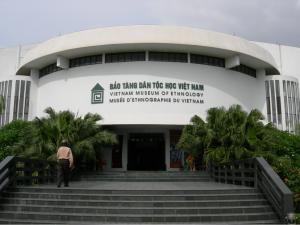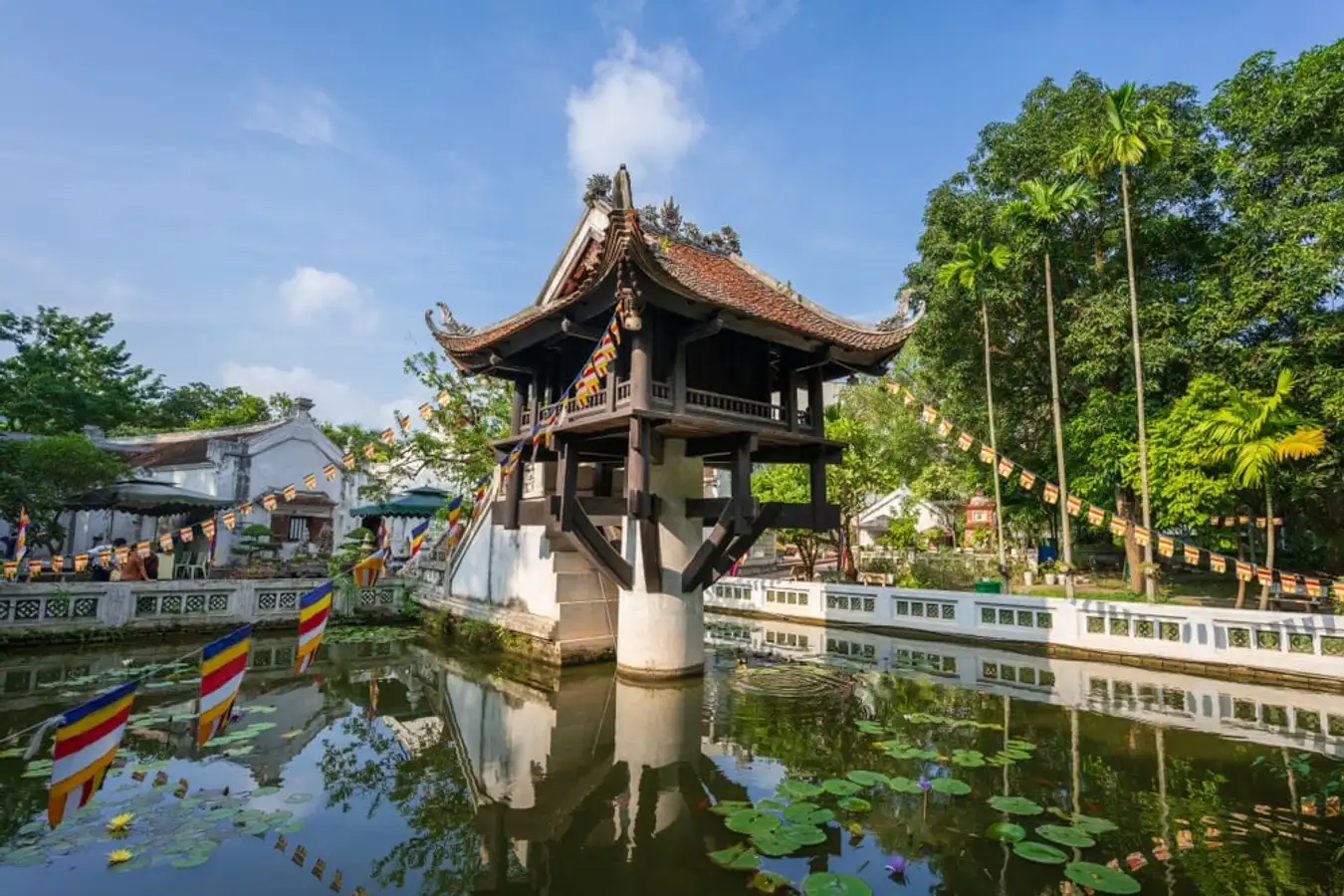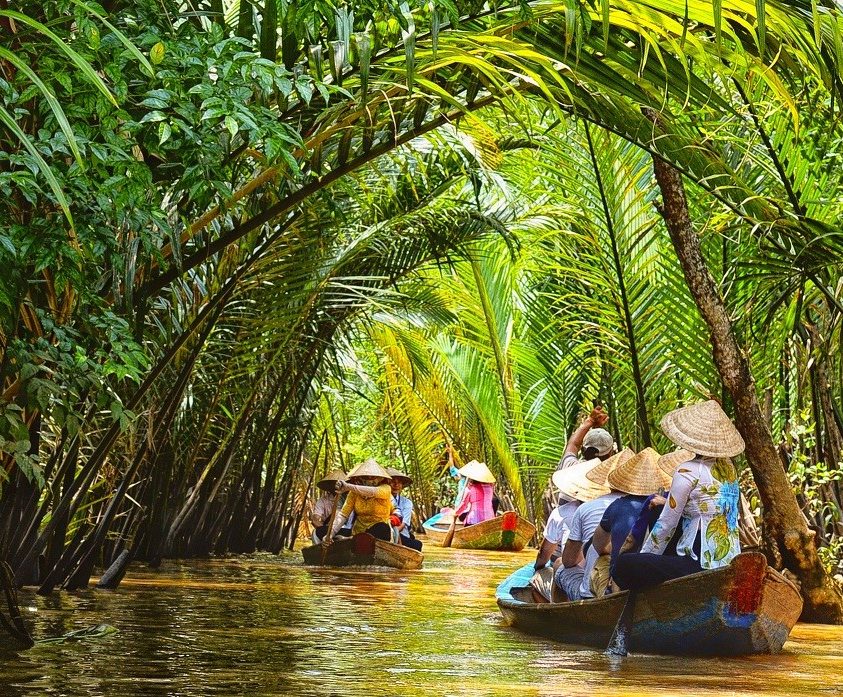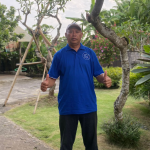Mai Chau, Vietnam: Practical Information for Your Trip
Located 140 km from Hanoi, Mai Chau is a lush green valley in Vietnam, home to White Thai ethnic villages. Its natural beauty, tranquility, and authenticity are more than enough to captivate travelers. Here’s our comprehensive guide to help you fully enjoy this peaceful haven.
General Introduction to Mai Chau
Mai Chau is a picturesque valley nestled amidst mountains covered with rice paddies, located 140 kilometers from Hanoi. This ultimate travel guide provides detailed tips and insights for exploring Mai Chau, including things to do, what to see, where to stay, what to eat, recommended restaurants, how to get there, and how to get around.
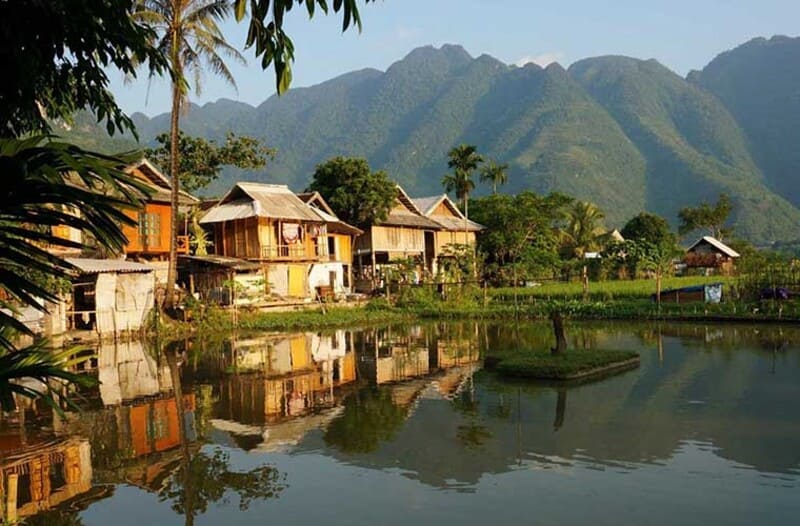
When to Visit Mai Chau
Mai Chau’s weather makes it a year-round destination. However, the best times to visit are from October to November or March to April. During these months, the days are sunny yet not too hot, providing ideal conditions for exploration.
In December, January, and sometimes February, the days—and especially the nights—can get quite chilly. Pack warm clothing for evening outings.
Best Times for Specific Experiences:
- Harvest Season (May and late September): A paradise for landscape photographers, this is when the fields are at their most vibrant, and farmers are bustling with activity.
- Winter (November to February): While the average daytime temperature is around 16°C, winter is the season to witness the peach and plum blossoms in full bloom. Nights can get cold, so pack accordingly.
- Bauhinia Bloom (September): The beautiful Orchid Tree flowers begin to bloom in September, adding charm to the scenery.
Key Events:
- Reunification Day (September 2): A national holiday that attracts thousands of visitors, both local and international, celebrating the end of the Vietnam War and the country’s reunification.
Summer (May to August):
The summer months bring temperatures ranging from 25°C to 35°C. If visiting during this time:
- Carry sun protection (hats, sunscreen, sunglasses).
- Pack a lightweight raincoat for sudden showers.
- Bring insect repellent and sturdy walking shoes for treks through the rice fields.
Each season in Mai Chau offers something unique, making it a destination worth visiting at any time of the year.
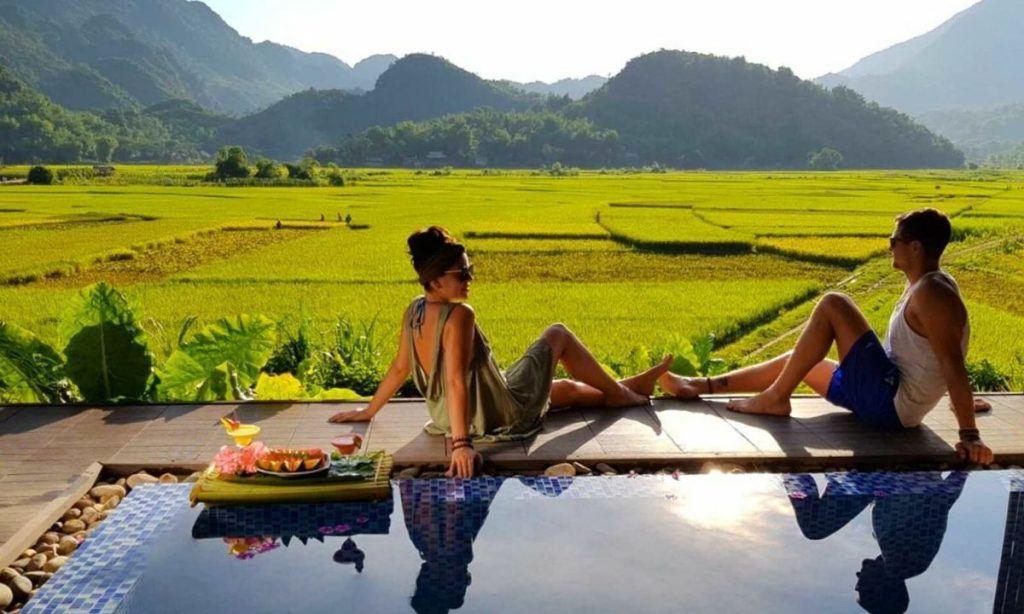
How to Get to Mai Chau
Travelers typically reach Mai Chau from Hanoi, located approximately 135 km away. Various transportation options are available:
By Public Bus from My Dinh Bus Station:
- Hoang Thao Bus Route
- Departure: From My Dinh Bus Station at 2:30 PM; from Mai Chau Town at 8:45 AM.
- Ha Loan Bus Route
- Departure: From My Dinh Bus Station at 7:50 AM; from Mai Chau Town at 1:30 PM.
- Note: The bus from Mai Chau to Hanoi can also pick up passengers at Village No. 1 at 12:30 PM, with an additional $1 fee.
Tourist Bus from Hanoi’s Old Quarter:
- Departure: Between 7:15 and 7:45 AM. Includes hotel pick-up in Mai Chau.
- Note: This bus drops passengers only at Mai Chau Sunrise Village, so arrange transportation with your host to reach your accommodation.
- Return: Leaves Mai Chau for Hanoi at around 3:00 PM. On weekends, buses cannot drop passengers at hotels in Hanoi’s Old Quarter due to heavy traffic. Coordinate with the driver for the closest stop to your destination.
- Cost: Around $7.50 per passenger one way.
Private Car Rental: A private round-trip car rental from Hanoi to Mai Chau for two days and one night costs approximately $120.
By Motorbike: If traveling by motorbike, stop at Thung Khe Market for local specialties and the Flagpole Viewpoint for breathtaking views of Mai Chau Valley.

How to Get Around Mai Chau
On Foot: Walking is ideal for exploring nearby villages, especially during cooler weather.
By Bicycle: Cycling is the best way to explore Mai Chau. Rent a bike for around $3 per day and ride for a couple of hours to visit other villages. Ask your host for a map and recommended routes, and let them know your destination and expected return time.
By Motorbike: Renting a motorbike ($12 per day, excluding fuel) is ideal for visiting nearby attractions like Go Lao Waterfall, Hoa Binh Lake, or Pu Luong Nature Reserve. Traffic around Mai Chau is light, making it a safe option.
By Private Car or Taxi: Cars and taxis are available for convenient transportation in and around Mai Chau.
By Electric Bus: Electric buses follow the same routes as bicycles and can accommodate up to 8 passengers for around $15 per trip. Ask your host to arrange this option, particularly on rainy days.
Whether you prefer exploring on foot, by bike, or with motorized transport, Mai Chau offers flexible options to suit every traveler’s needs.

What to Do and See in Mai Chau
There are plenty of activities to enjoy in Mai Chau, depending on your base location. Trekking or cycling are popular options for exploring nearby villages. The five main villages to visit are Lac 1 and 2, Pom Coong, Van, Nhot, and Na Phon. The terraced rice fields in Buoc Village are a paradise for photographers.
Thung Khe Pass
A Scenic Viewpoint at 1,000 Meters Above Sea Level
Travel three hours from Hanoi along National Highway 6 to Hoa Binh Province. At an altitude of 1,000 meters above sea level, the bustling city gives way to vast open rice fields, picturesque villages, and majestic mountains.
Food stalls line the highway, offering an array of local specialties, from boiled corn to “lam” bread, a dish of sticky rice wrapped in banana leaves and cooked in bamboo tubes.
The panoramic view of the valley from Thung Khe Pass is one of the most breathtaking sights in the entire province.

Lac Village
A Historical Village with Vibrant Culture
Lac Village has a history of over 700 years and comprises two communities:
- Lac Village No. 1: The bustling center where visitors can find an abundance of food and souvenirs. Markets sell items such as traditional Thai clothing, intricately designed scarves, bamboo flutes, buffalo bells, and handmade gongs. Locals are welcoming and often happy to pose for photographs, offering warm smiles to visitors.
- Lac Village No. 2: A quieter and more serene area, perfect for relaxation. Surrounded by lush forests, villagers spend their days growing rice and weaving. The local Thai ethnic group has lived here for generations and offers around 50 stilt houses for homestay accommodations, complete with blankets, cushions, and mats.

Mo Luong Cave
A Geological Marvel with a Historic Past
The distinctive karst limestone mountains of Mai Chau are part of the same geological formation as the famous Dragon’s Back Islands in Ha Long Bay.
Just two kilometers from Lac Village, Mo Luong Cave, also called Bo Luong by locals (meaning “Great Water Mine”), is a favorite destination for photographers and adventurers. The cave consists of four large chambers adorned with unique stalactites and stalagmites.
At the rear of the cave system, cool and clean water from an underground stream flows into a nearby lake.
During the resistance war against the French, this cave system served as a strategic base for the Vietnamese army, acting as a meeting place for soldiers and civilians in the region.
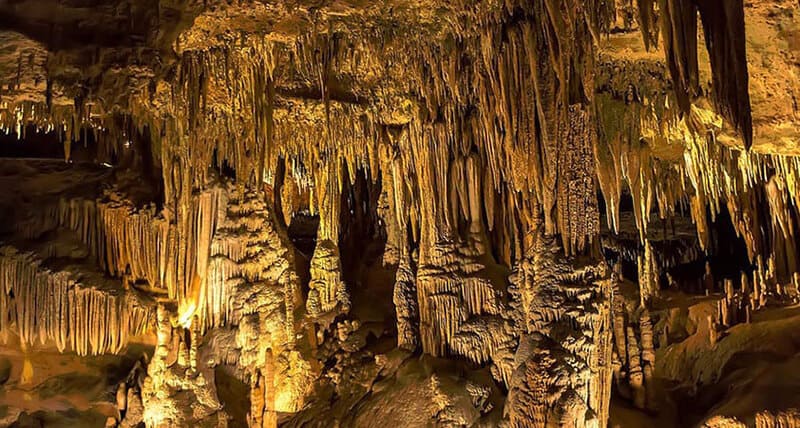
What to Eat in Mai Chau
When visiting Mai Chau, one cannot overlook its distinct and renowned culinary culture. Most dishes reflect the traditional Thai ethnic heritage. Signature specialties include Com Lam (sticky rice wrapped in banana leaves and cooked in bamboo tubes), Nep Nuong (sticky rice from terraced fields), grilled freshwater fish, bitter bamboo shoots, and more. Below are some must-try dishes:
Com Lam – Sticky Rice Cooked in Bamboo
Com Lam is a signature dish of Mai Chau, made primarily of sticky rice. It requires banana leaves, a bamboo tube, and optional ingredients such as coconut milk and shredded coconut.
The sticky rice is washed, soaked for a few hours, and then placed inside a small bamboo tube. It takes skill and patience to cook this dish, with Thai women being experts at it. The key lies in carefully rotating the bamboo tube to ensure the rice cooks evenly.
Once cooked, the bamboo skin is peeled away, leaving a thin layer that is stripped off before eating. Com Lam offers an aromatic blend of banana leaves, fresh bamboo, and sticky rice flavors. It pairs perfectly with local rice wine (ruou can) and grilled meat.

Ga Doi – Hill Chicken
Ga Doi refers to free-range chickens that forage on the hills. These chickens are smaller and lighter than farm-raised ones, but their meat is flavorful, firm, and aromatic. A Ga Doi chicken typically costs between $15 and $25.
The chicken is marinated with mac ken, a unique seasoning that enhances its flavor. It is then steamed with lime leaves or grilled over smokeless charcoal.

Grilled Freshwater Fish
This small, stream-dwelling fish is a rare find in Mai Chau. Grilled freshwater fish is a delicacy, though it can also be fried. Don’t miss the chance to try it if it’s available during your visit

Grilled Pork Skewers
Pork in Mai Chau is sourced from pigs raised naturally without stimulants, resulting in tender, flavorful meat. For the skewers, pork is marinated with turmeric, lemongrass, and seasonings before being grilled slowly. The goal is to achieve a golden, crispy exterior while retaining juiciness.

Sticky Rice from Terraced Fields
Sticky rice is a staple in Mai Chau, harvested from traditional terraced fields. To prepare, the rice is soaked, steamed in wooden steamers, and then placed in bamboo baskets midway through cooking. This method ensures a fragrant and perfectly cooked sticky rice dish.
Sticky rice pairs excellently with barbecue dishes like grilled fish, pork, or chicken.
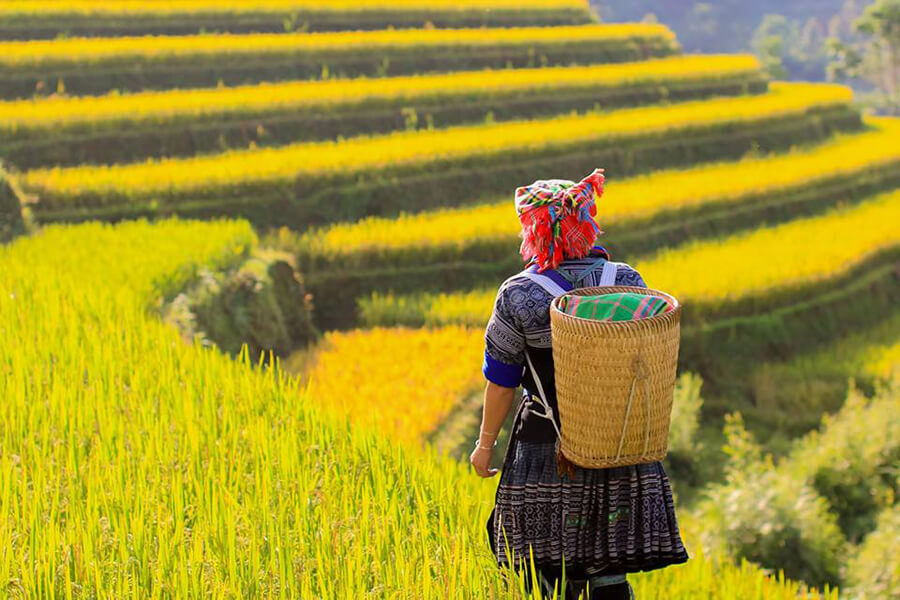
Where to Stay in Mai Chau
Mai Chau offers a wide range of accommodations, including homestays, hotels, and resorts. Here are some recommended options:
Homestays
- M Cuong Homestay in Van Village: A dreamlike retreat for those seeking a peaceful escape.
- Ume Mai Chau Eco Homestay in Lac Village No. 2: A serene and eco-friendly choice.
- Mai Chau PoomCoong Homestay: Located in Poom Coong Village.
- Mai Chau Van Mai Homestay: Situated 10 kilometers from Mai Chau in Van Mai Village.
- Quan Hang Homestay in Lac Village No. 1: Offers a traditional stay in a local village.
Hotels and Resorts
- Mai Chau Ecolodge: Renowned as the best accommodation in Mai Chau, this luxurious eco-resort has been in operation since June 2014. Located in a scenic valley, it provides a blend of luxury and ethnic Thai culture.
- Mai Chau Sunset Boutique Hotel: A comfortable and scenic boutique option.
- Mai Chau Villa: Offers cozy and private stays amidst lush landscapes.
- Mai Chau Sunrise Village: A charming resort for relaxation.
- Sol Bungalow: Provides modern amenities in a picturesque setting.
- Mai Chau Lodge: A three-star hotel ideal for a convenient and comfortable stay.
Tips for Choosing Your Stay
- Avoid staying in Lac Village No. 1, as it is very touristy and better suited for domestic travelers.
- Opt for Van Village, a less commercialized area near Mai Chau town. The village has recently started offering tourism services, with friendly locals and a stunning garden featuring hundreds of flower varieties.
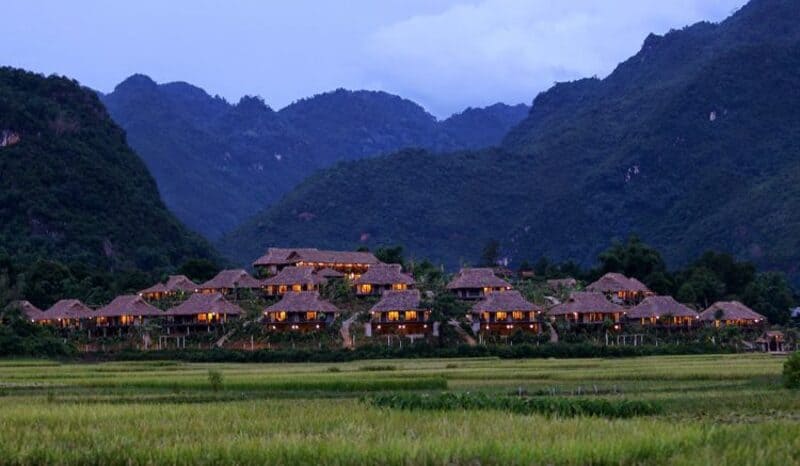
Entertainment in Mai Chau
In Mai Chau, there are a few entertainment options to enjoy. For coffee lovers, you can find some places in Lac Village No. 1 offering local drinks, and for a more Western-style experience, visit the Mai Chau Sunset Bar. If you’re in the mood for more variety, Mai Chau Town, just 1.5 kilometers away from Lac Village, has a wider selection of cafés to explore.
For those who enjoy karaoke, head to Mai Chau Town where you’ll find services in hotels like Ngoc Bach and Khoa Thanh. If you’re looking to relax with a massage, there are two local massage shops in Lac Village No. 1. One is on the main road between Lac Village No. 2 and Lac Village No. 1, while the other is inside Lac Village No. 1 itself. A tip: the older masseuse is known to give a better massage experience.
The area has a small bar scene, with only one bar located next to Mai Chau Hostel in Lac Village No. 1, mainly catering to backpackers. For a more lively time, you can head to Mai Chau Town or enjoy the peaceful ambiance of the villages with activities like stargazing or cultural performances at local homestays.

Traditional Festivals in Mai Chau
Xen Xo Phon Festival
Held every fourth lunar month (April or May), the Xen Xo Phon Festival is a time when the White Thai people of Mai Chau pray to the heavens for rain through singing and dancing. During the evenings, White Thai villagers gather to sing and dance around their homes, lighting torches and accepting offerings in exchange for blessings of rain for the season. As the villages rely on good rainfall for bountiful rice and vegetable harvests, they seek divine intervention annually. The larger the celebration, the heavier the rains are believed to be when the weather changes.

Vu Lan Festival
Taking place in early September, the Tet Trung Nguyen Festival is dedicated to honoring “lost souls” or “wandering spirits.” According to ancient beliefs, the spirits of deceased relatives are released on this day and return to visit their earthly families. Vietnamese families pay homage by preparing lavish feasts for these wandering souls, offering various foods, including meat, rice, cakes, and more.

Gong Festival of the Muong Ethnic Group
Celebrated in spring and during the Lunar New Year (usually in November), the Gong Festival is a unique folk ritual. From the first to the seventh day of the Lunar New Year, groups visit families in the villages, singing songs and playing gongs to wish them health, prosperity, and peace for the year ahead.
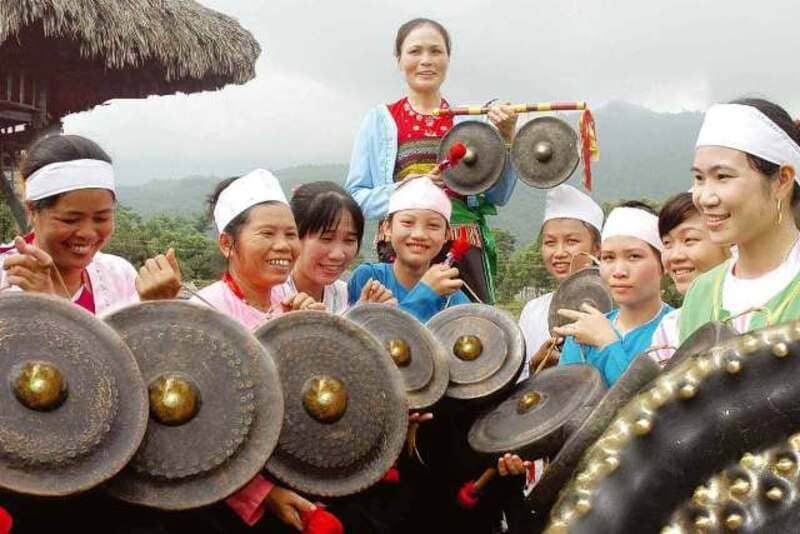
New Rice Festivals
From September to early October, the New Rice Festivals are celebrated in the region. Following the rice harvest, the Tay people host the “New Rice” festival. They offer the fruits of their labor to the heavens and the earth in gratitude, seeking good weather, prosperity, a healthy family, and respect for their ancestors.
These vibrant traditional festivals showcase the rich cultural heritage of Mai Chau and offer visitors a unique insight into the lives and customs of the local ethnic groups.

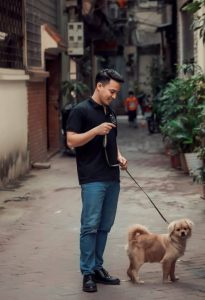
Thanh Nam Nguyen
Born in Ho Chi Minh City with Vietnamese-American roots, Thanh Nam Nguyen is passionate about adventures and traveling in Indochina. As a local guide for All Vietnam Senses, he leads tours in southern Vietnam, Cambodia, and Thailand, sharing his knowledge with travelers and inspiring readers to explore the region. Leave a comment below for him to respond directly!
Related Tours
Our Distinctive Highlights
Related articles

Beaches of Vietnam’s South Central Coast

9 Mistakes That Will Ruin Your Holiday in Vietnam

Traditional Craft Villages

Hanoi: 7 Questions to ask about the capital of Vietnam
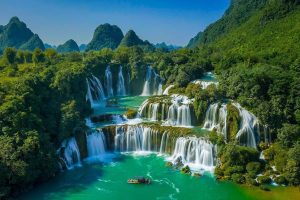
Guide to Ban Gioc Waterfall: Vietnam’s Best Waterfall Experience
